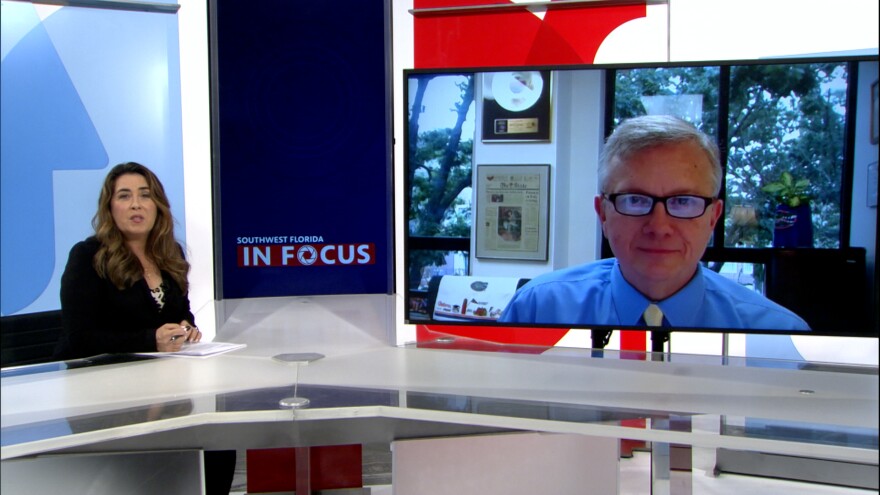June ushers in the start of another hurricane season as the tropics heat up heading to a September peak.
Just days into the season, storm experts are expressing concern. And not just about all the predictions for yet another busy hurricane season – every reliable forecasting operation expects an above average hurricane season. Rather meteorologists question how well they will be able to do their jobs with the significantly reduced number of federal workers and a reduction in weather-monitoring activities.
Substantial budget cuts and staff reductions ordered by the Donald Trump administration at the National Weather Service and National Oceanic Atmospheric Administration have left field offices across the country unstaffed at various points throughout the day and night. All told about 600 positions were cut.
Veteran South Florida meteorologist John Morales at NBC 6 warned viewers recently that the Trump cuts will harm forecasts.
He said that for 34 years in South Florida he’s followed weather systems closely. He spoke of 2019’s Hurricane Dorian which crushed the Bahamas. The sheer destruction caused panic in neighboring coastal South Florida.
Morales, while on air for his nightly forecast, told viewers he no longer has the confidence he had when he assured his viewers in 2019 that they need not worry because the storm was going to turn.
“And I am here to tell you that I am not sure I can do that this year because of the cuts, the gutting, the sledgehammer attack on science in general – and I could talk about that for a long, long time,” he said.
The attacks on science, he said, are impacting U.S. leadership in the science world. That resulting loss of leadership, he predicts, will have a impact on the science community for multiple generations.
Morales continued explaining that between Tampa and the Keys — including the National Weather Service’s field office in Miami — there’s a vacancy rate of between 20 and 40%. The top chief meteorologist position in the Tampa field office is currently vacant. There are similar vacancy rates throughout the country.
“This type of staffing shortage is having impacts across the nation,” he said.
The cuts also mean there will be significantly fewer weather balloon launches. Across the country balloons are deployed twice daily to provide snapshots of the atmospheric conditions that create weather events.
Morales isn’t alone in speaking out as the country was entering into the 2025 the Atlantic Basin hurricane season. The season is from June 1 through Nov. 30. After great public backlash about 100 positions will be reinstated, NPR reports.
Will that be enough?
What does this mean for public radio stations like WGCU that rely on the Florida Public Radio Emergency Network’s five meteorologists?
WGCU’s Sandra Viktorova sat down with Tim Miller, the director of FPREN this week. Here are some highlights of the conversation. The full conversation about cuts to the National Weather Service, the National Oceanic Atmospheric Administration as well as the Federal Emergency Managements Agency, can be viewed on WGCU’s YouTube channel.
You can also watch "Southwest Florida in Focus" for a slightly truncated discussion between the two.
Viktorova: “Are theses cuts a big deal?”
Miller: “They are a big deal. …These weather balloons are extremely important to be launched all across the country. They give us data of the upper atmosphere. They give us exactly wind movements, humidity, temperature readings, and just basically a snapshot of the atmosphere. If we lose that ability, we lose the ability to be able to forecast, and forecast modeling will be hampered by this. And there are many areas around the country that already were in dire straits not having a fully staffed National Weather Service office, and now many of these cuts to those particular areas just hampers the situation even further.”
Viktorova: “A lot of the critics of these cuts talk about the reduction in capacity and brain drain of senior staff ... Do you have those concerns?
Miller: “You know, it's extremely important to understand the changing dynamics of weather, right? And then to have a senior forecaster to be let go or gone, you have a new meteorologist and they're not as knowledgeable. … It remains to be seen, but it is certainly not encouraging to say the least.”
Viktorova: “Do you see the legitimacy in saying that there are ways that perhaps NOAA could be more efficient -- FEMA as well?”
Miller: “I think anything could be more efficient, that's for sure. But the problem with NOAA and the National Weather Service, is the fact that we have been down meteorologists all around the country for a number of years. So these cuts are going to hamper our situation even worse. …We really need the most weather prowess that we can have available around the country, at our fingertips, so the public remains safe. That's going to be a really concern, especially as we go into hurricane season.”
WGCU is your trusted source for news and information in Southwest Florida. We are a nonprofit public service, and your support is more critical than ever. Keep public media strong and donate now. Thank you.







